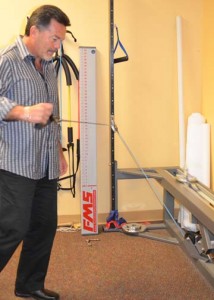

Diabetes affects people of all shapes, sizes and ages, and while being diagnosed with Diabetes can be scary, it doesn’t necessarily have to be. Modern medicine has changed the way Diabetes is treated, and as more developments are made, the quality of life for those suffering from Type 1 and Type 2 Diabetes continues to improve. Nurse Practitioner at Tacoma’s Pacific NW Primary Care and Board Member of the Pierce County Diabetes Association, Becky Blodgett, ARNP, says there is a common misconception that Diabetes correlates to a diminished quality of life. “Having Diabetes doesn’t mean you have to be sick,” says Blodgett.
There are two main types of Diabetes. Type 1, an autoimmune disease typically diagnosed in children and young adults, only accounts for five percent of all Diabetes. In Type 1 Diabetes the body fails to produce insulin, the hormone that converts sugar (blood glucose) into energy. Type 1 Diabetes requires insulin therapy, diet and exercise, to help prevent the development of other health risks associated with the disease.
In Type 2 Diabetes, the most common type of Diabetes, affects both young and old. Its cause is multifactorial – decline in insulin level over years along with/or insulin resistance. Insulin resistance is when the insulin that is produced by the body is ineffective at moving the glucose from the blood stream to the cells where it is used for energy. Once the body develops resistance to insulin, the pancreas begins producing excess insulin to compensate. Over time, the pancreas is unable to keep up with the demand for insulin, and abnormal levels of blood glucose develop. This is a slow process and may take years to develop or it can happen abruptly.
Type 1 diabetes needs insulin and Type 2 diabetes can be managed with diet and exercise alone or may need oral medication and/or insulin. In both types of diabetes affective treatment includes making simply healthy lifestyle choices to make insulin work more effectively in the body.
Once a person has been diagnosed with Diabetes and is educated about what their condition entails, they are ready to start taking charge and making changes. The first change typically begins with diet. Joan Hogan, nutritionist and founder of Food 4 Life Nutrition Counseling, is an expert in her field and a trusted local source when it comes to helping diabetics make healthful nutritional changes.

Hogan says it’s important to first look at a diabetic’s “diet history.” By doing this, she is able to get a feel for what kind of foods the body is used to, what dietary changes they may have already tried to make, and where they are currently with their nutritional health. Next she moves on to what she calls, “diet hygiene.” Hogan explains that the nutritional guidelines or “diet hygiene” that she recommends varies from patient-to-patient, and depends on whether they are taking insulin or carb counting, and what type of Diabetes they are in.
In general though, Hogan says that spacing out meals and eating veggie-friendly diets tend to be the most beneficial. “The healthiest things I find are more plant-based diets. Getting away from red meat and animal protein is key.” Hogan also recommends keeping food as clean as possible by avoiding dyes, additives, and ingredients that are hard to pronounce.
Diet and exercise go hand-in-hand, and Kurt Moss, physical therapist and owner of AIM Physical Therapy, says that exercise is crucial to not only in managing Diabetes, but also preventing the diagnosis in the first place. “Exercise reduces fatigue, joint and muscle pain, and fat accumulation. It also cuts the risk of developing abnormal glucose levels in half. Studies have shown that walking briskly for five hours a week reduces the chance for developing Diabetes by 75 percent,” says Moss. For those diagnosed with Diabetes, exercise, in conjunction with a healthy diet, can yield dramatic results. Battling Diabetes is an effort that entails clinicians and varying disciplines to help the Diabetic client be balanced and informed.
“Exercise implements things at a cellular level, but it also changes the dynamic of how the body utilizes nutrition and how the brain processes information. Exercise changes the entire system of our body, which is why education, nutrition and exercise are all necessary for a good, stable lifestyle,” explains Moss. Equally important as exercising, is exercising right. Moss says it’s important to have a workout that is specific to your body type and balanced between cardio and weight resistance. “If you don’t exercise and eat appropriately, you’re not going to lose that body fat. You just start working against yourself.”
When it comes to personalized training designed to yield optimum results, that’s where AIM Physical Therapy comes in. “We have professionals in our clinic who are able to determine what the right amount cardiovascular and weight resistance activity is for each patient.” Moss explains that after several sessions with a professional, his clients are able to take what they’ve learned, apply it to their daily lives, and experience outstanding results.
Through education, diligence, and a few healthy lifestyle practices, living a healthy life with Diabetes can be achieved. “Diabetes is totally treatable,” says Blodgett. “You can live very healthfully with Diabetes if you stay out of denial and get education, take medication if you need it, and test your blood regularly. Those are the extra steps. Not diet and exercise. Diet and exercise is what everyone should be doing.”












































